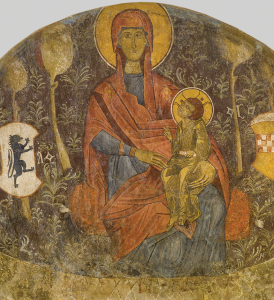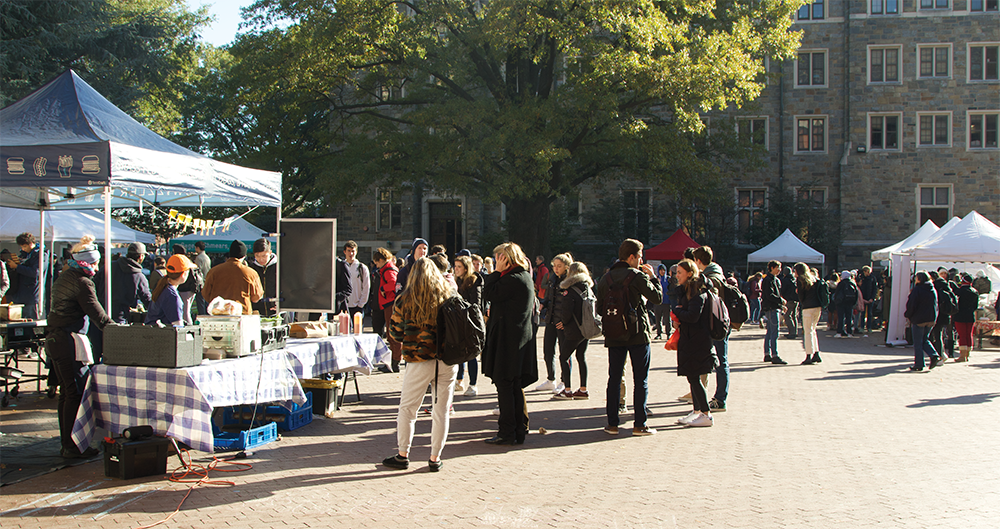
For many students, their knowledge of the history of art begins with the pristine marble of the Greco-Romans and jumps straight to the developments in realism and perspective that dominated the Renaissance. The problem with this picture is that it skips entire civilizations that produced breathtaking and important pieces which shaped the development of modern art and religious practice. The most significant of these empires is the Byzantine, which lasted from A.D. 300-1453, a period of over 1100 years.
To modern audiences, Byzantine art — with its dramatic gold backgrounds and not quite natural human bodies — may seem quaint, underdeveloped or difficult to relate to, but “Heaven and Earth,” the newest exhibit at the National Gallery of Art that features works from Greek national collections, offers an in-depth chronological look at the development of Byzantine religious art and how it established the Christian visual language we still encounter to this day.
What sets the art of Byzantium apart from the Middle Ages and the Renaissance is the unparalleled embracing of Christian religious ideology in its art. The images and iconography that were popularized during this period became the standard religious images for the next few centuries. Images of the Virgin Mary, infant Jesus and sparse works of Christ’s crucifixion abound in this particular exhibit, but each offers a different emotional interpretation of the same idea — the humanity and suffering of Christ the Redeemer.
What’s remarkable about the Byzantines was the sheer volume of different types of religious artifacts they left behind. This exhibit alone features intricate mosaics, sculptures, frescoes, illuminated manuscripts, tapestries, jewelry, eating utensils and pretty much everything in between. The scale of the works also varies considerably from massive carvings to tiny personal devotional icons. This variety, as well as the relatively small size of the exhibit, helps to keep the historical narrative manageable and to keep the viewers engaged from beginning to end.
One feature of the exhibit that should not be missed is the video presentation highlighting the architecture and decoration of Byzantine churches. It can be tempting to skip these installations in museums, but this one in particular is worth pausing for. While seeing Byzantine religious artifacts in a museum is interesting, as a viewer you lose the religious context the images were often presented in and without this context, some of the deep religious power of the artifacts is lost. The high-definition video footage, apart from being simply astounding to look at, does a great job at building a physical backdrop for the artifacts. The scale of Byzantine churches — with massively intricate gold mosaics covering most of their interior walls — is difficult to capture, but the footage does a commendable job at showing both the remarkable size and details of these monumental churches, monasteries and chapels.
Beyond its importance and accessibility, this exhibit shouldn’t be passed by simply because there has never been a more complete chronological presentation of art of this period in the United States — especially not one composed of pieces owned by international governments and collections. All art enthusiasts should take advantage of this amazing opportunity while it is available. The exhibit will run until March 2, 2014.














